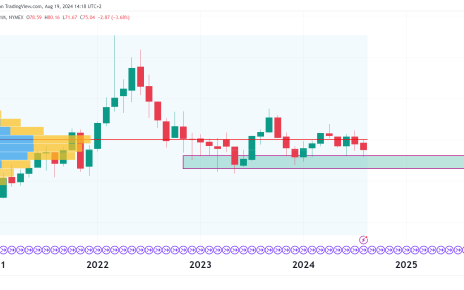The U.S. stock market continued to surge last week. The Dow Jones Industrial Average, S&P 500, and Nasdaq Composite all hit new highs again. On Thursday, the Dow increased by approximately 0.57%, while the S&P 500 rallied 1.8% and the Nasdaq saw gains of 3.57% (Nasdaq) (Investopedia).
What is driving this rally besides free money?
Federal Reserve’s Monetary Policy: The anticipation of a U.S. Federal Reserve interest rate cut later this year is a significant driver. Market expectations are leaning towards a reduction in rates starting in September, with potential further cuts into 2024.
Earnings Growth: U.S. companies have shown strong earnings performance, particularly in the first quarter of 2024. The S&P 500 saw an 11% year-over-year increase in earnings, driven notably by the top-performing tech companies.
Global Economic Stability: Internationally, the global economic outlook is also fostering positive sentiment. Key regions like Europe and Japan are experiencing improved economic conditions. Europe is recovering from near-recession conditions, with a boost in manufacturing and bank lending.
Advances in Technology and AI: Technological advancements, especially in artificial intelligence, are expected to boost productivity and economic growth. These improvements are already evident in increased efficiency and cost-structure benefits in various industries, providing a favorable long-term outlook for corporate profits and market performance
Dow Jones Futures (YM)

Support and Resistance Levels:
- Resistance Levels: Immediate resistance is seen at R1 ($40,154), with further resistance at R2 ($40,838) and R3 ($41,749).
- Support Levels: Key support levels are at S1 ($38,550), which is also the ascending trend line which is forming an ascending triangle.
The ascending triangle is a bullish continuation pattern. We need to see a strong close above the ATH for this pattern to be in play, however, we can anticipate it and buy on support at the ascending line in hopes of a breakout later on.
NASDAQ Futures (NQ)

Moving Averages:
- 25-day SMA: The price is comfortably above the 25-day SMA at $19,713.00, indicating short-term bullish momentum.
- 100-day SMA: The 100-day SMA at $18,556.64 is well below the current price and there is a divergence between the MA’s.
Trade Opportunities
Long Position
Even though the markets are in a strong bullish trend, I see NQ specifically as overbought and a long trade does not look right at these prices right now.
Short Position
- Entry: A short position might be considered if the price fails to break above the R1 level and shows signs of a bearish reversal.
- Target: The target for a short position could be the pivot point at $19,578.00. A simple small scap could also be fine.
- Stop-Loss: A stop-loss placed above the recent high at $20,800 to limit potential losses.
S&P 500 Futures (ES)

- 50-day SMA: The price is significantly above the 50-day SMA at $4,885.92.
- 200-day SMA: The 200-day SMA at $4,308.61 provides strong long-term support.
Bearish Divergence: The RSI shows a bearish divergence, where the price is making higher highs while the RSI is making lower highs. This could indicate a potential reversal or at least a slowdown in the current uptrend and is something we need to watch closely.
Trade Opportunities
Short Position
Given the bearish divergence and the overbought RSI, a high-probability trade opportunity is to consider a short position.
- Entry: Consider entering a short position if the price shows signs of reversal or fails to make a new high, confirming the bearish divergence.
- Target: The initial target for the short position could be the $5,160.
- Stop-Loss: Place a stop-loss above the recent high at $5,650 to manage risk.
Long Position
While the overall trend remains bullish, the bearish divergence and overbought RSI suggest caution. A long position might be considered under the following conditions:
- Entry: Consider entering a long position only if the price breaks above the recent high with strong volume, invalidating the bearish divergence.
- Target: The initial target could be a new all-time high above $5,700, followed by subsequent resistance levels.
- Stop-Loss: Place a stop-loss below the recent consolidation level around $5,500 to manage risk.
Conclusion
Keep in mind that stock markets are soaring but that doesn’t mean we should chase the market higher. Remember to keep solid risk management in place; never gamble! Look for probabilities and stick to them, don’t go around hoping for trading to work out, that is not a long term strategy.



